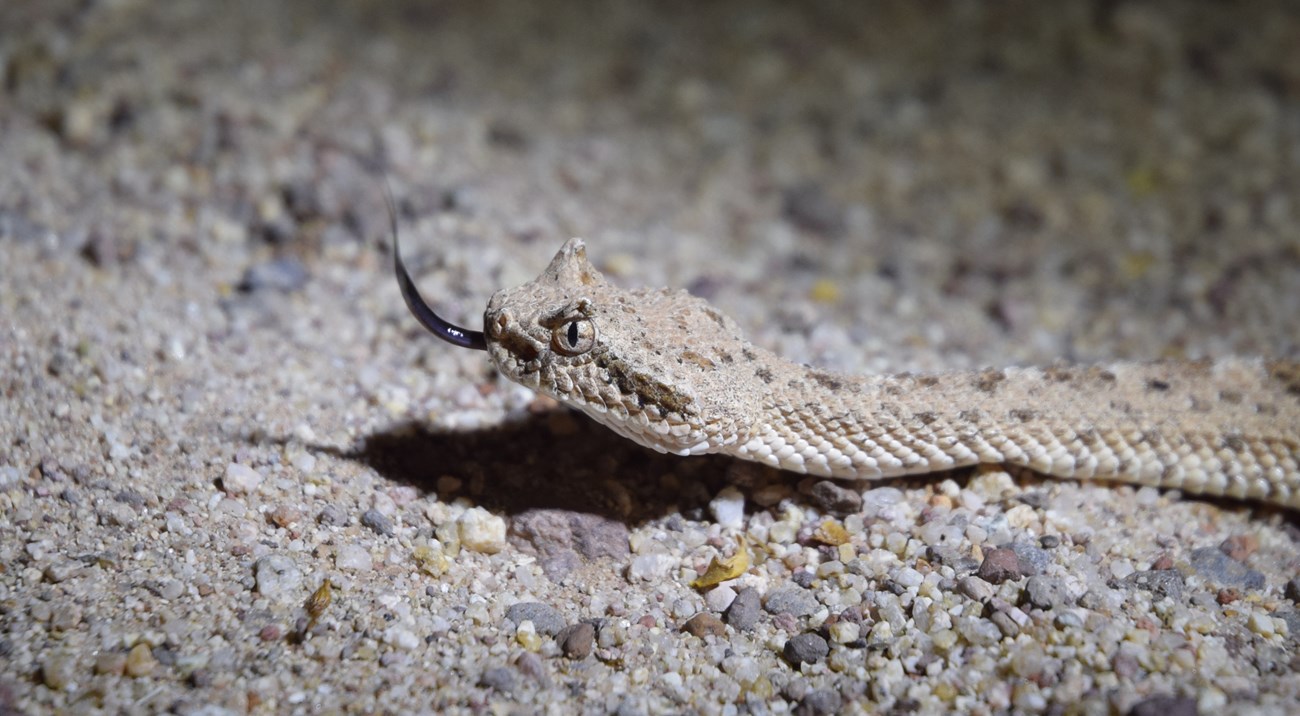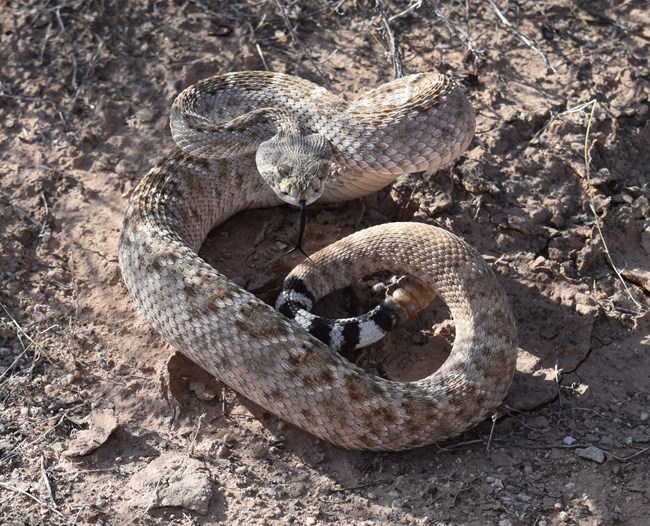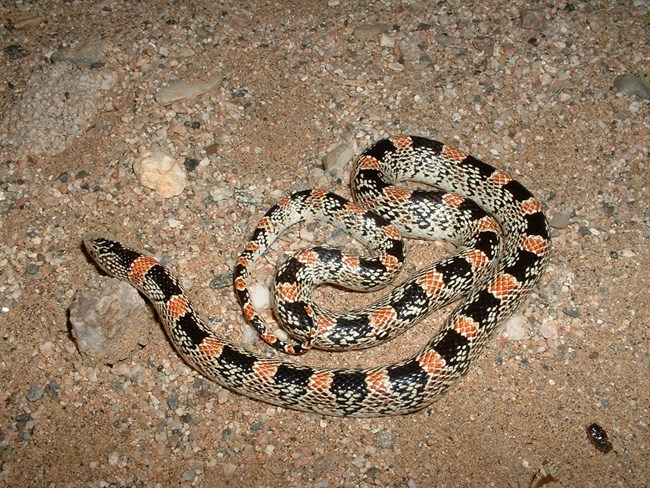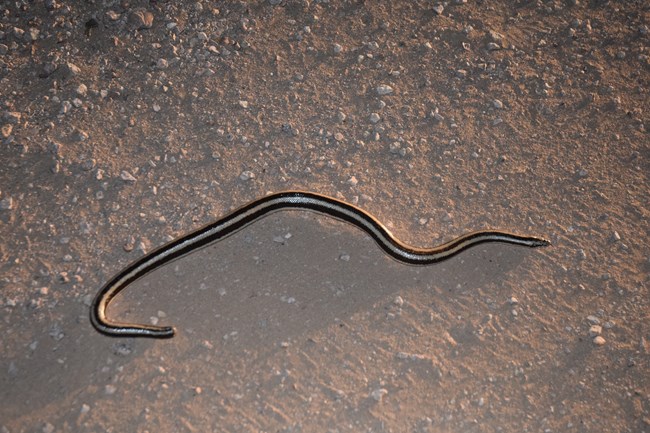
NPS photo Snakes are revered, feared, and worshipped the world around. The Sonoran Desert and the National Monument are home to many species of these unique reptiles. These critters have evolved to not need legs, but they move through their environments with a range of motions, including slithering, sidewinding, and even swimming. Snakes are often misunderstood and unfairly targeted by humans, but these animals play important roles in their ecosystem, such as controlling small mammal population. Late evenings and early mornings in the summer, and daytime in the winter are great times to look for snakes. Keep an eye out for snake sheds left in grasses or near shrubs while you hike. 
NPS photo Western diamondback (Crotalus atrox)The western diamondback has developed a fierce reputation as a powerful venomous snake in the desert southwest. In reality, these snakes avoid confrontation when possible, preferring to use their rattle as a warning, rather than strike. Venom takes energy and time for the snake to create, and they prefer to use it on prey, rather than in self-defense. These rattlesnakes hunt rodents, locating them with heat sensing pits near their nose. The presence of these heat sensing organs means this rattlesnake is a pit viper. Identify this SnakeWestern diamondbacks are variable in color, though most have a cream colored belly, and dusty gray-brown top, with darker brown scales forming a diamond pattern down the length of the back. A consistent feature of this snake is the presence of white and black bands near the rattle that are equal in width. The Mojave green rattlesnake can look very similar to a diamondback and are also found in the park, however the black bands on their tale are thinner relative to the white. Adult are typically 4-5 feet long (1.2-1.5 m). 
NPS photo/Dan Moen Long-nosed snake (Rhinocheilus lecontei)Long-nosed snakes are burrowing snakes, excavating holes where they rest during the heat of the day. Long-nosed snakes’ diet consist of lizards and smaller snakes. Keep a lookout for these snakes after the sun sets, and they exit their burrows to hunt and warm themselves on exposed surfaces such as pavement. Identify this SnakeThe long-nosed snake has a slender body, reaching lengths of 20-35 inches (50-90 cm). The snake’s skin is cream colored, with red and black, or just black banding that appears almost “rubbed away”, giving the snake a worn look. The long, narrow face is capped with a broad, upturned scale that aids the snake in digging. These harmless snakes have a similar color pattern to the potentially dangerous coral snake, also found here. 
NPS photo Rosy boa (Lichanura trivirgata)When hunting, the rosy boa locates a prey item and strikes, holding the prey tightly with rows of curved teeth. Desert rosy boas are true boas, in the same family as the boa constrictors of Central and South America. In fact, they are one of only four species of true boa found in the United States! This snake does not inject venom, instead tightly coiling around its prey to suffocate it. This boa will spend most of its time curled up in rocky crevices or abandoned burrows to escape the element, emerging at night to hunt and warm itself. Identify this SnakeThis distinguished snake can be found lurking through brush in the evening and night, in search of rodent prey. Rosy boas can be between 15 and 36 inches long (38-90 cm) and are relatively heavy bodied with a blunt tail tip. The snake’s skin is cream to light pink colored, with three distinct stripes running from head to tail. These stripes are usually black here, but may be a lighter brown. More About Sonoran Desert Reptiles |
Last updated: September 23, 2023
